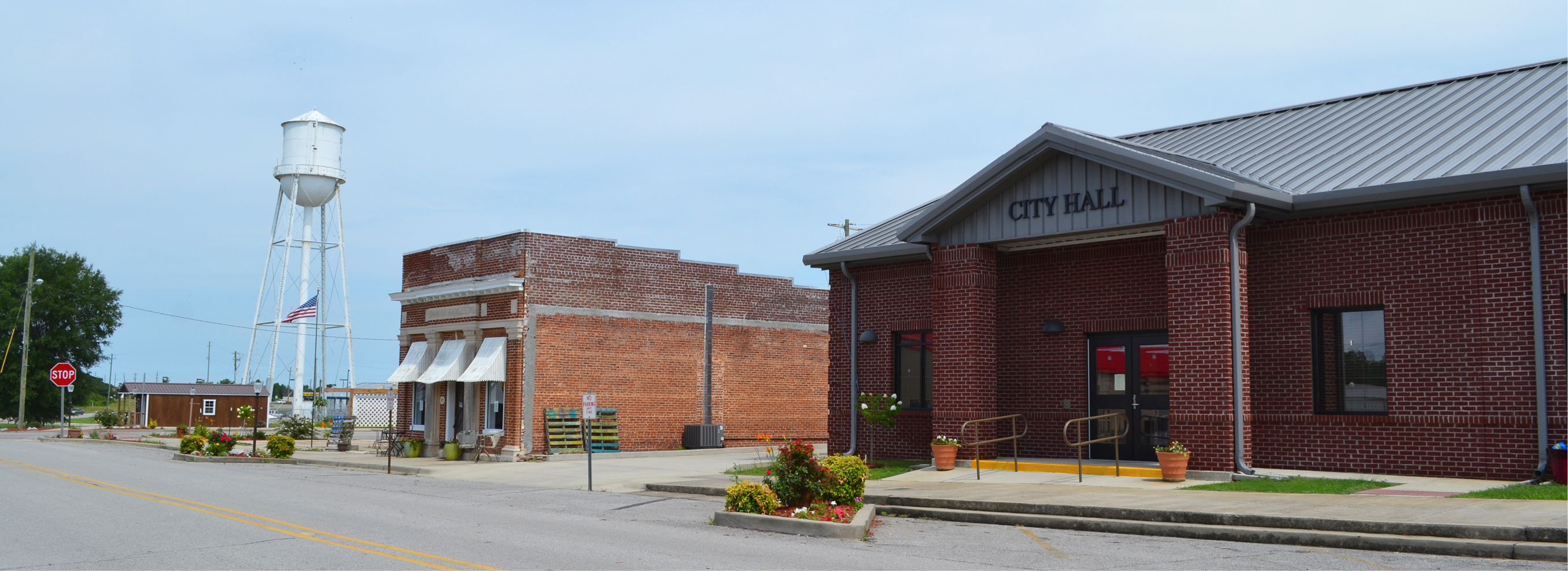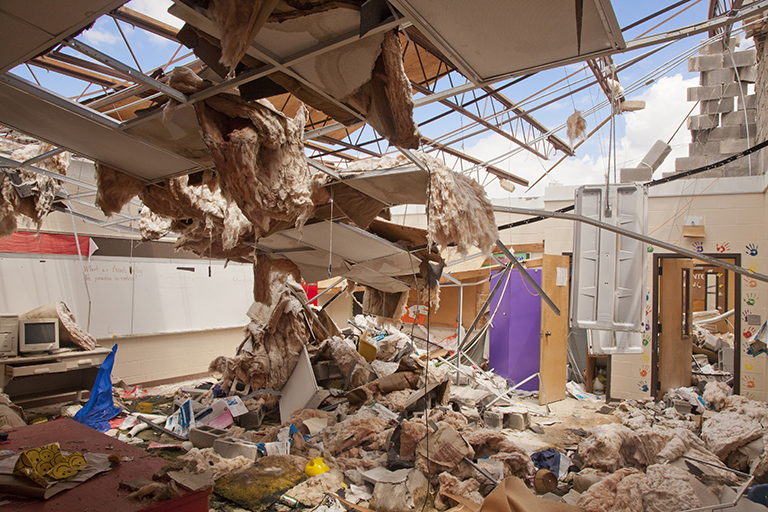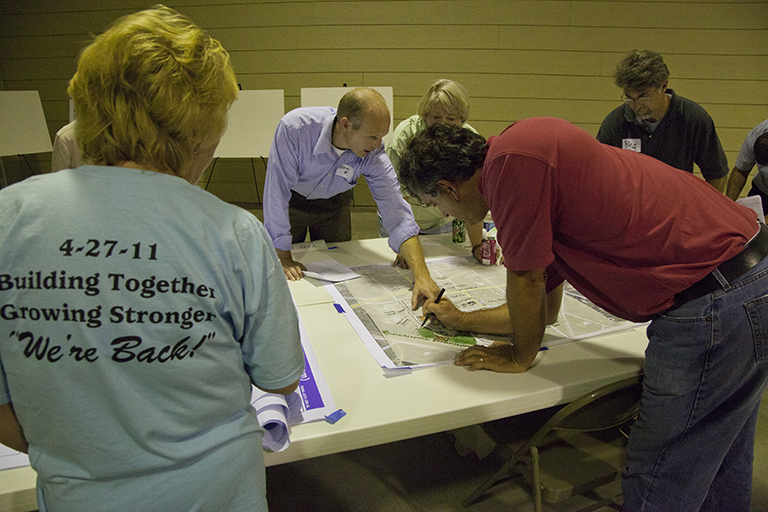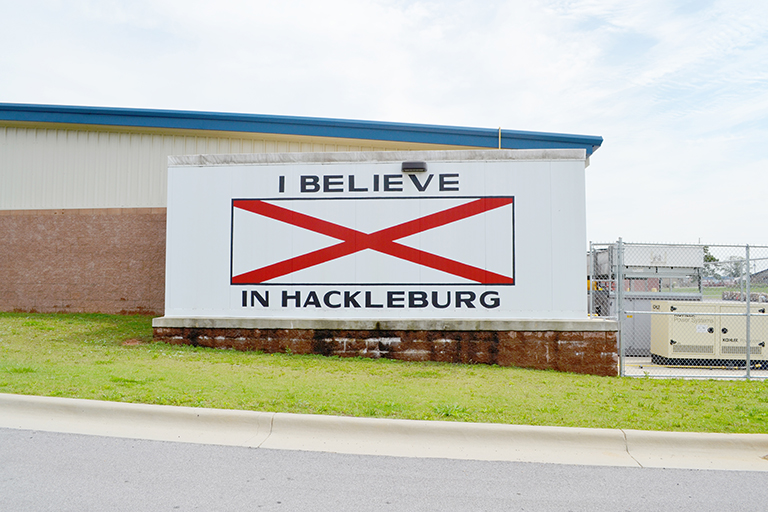Six years later
May 31, 2017 · Community, Projects

Turning tragedy into triumph in Hackleburg
Prior to April 27, 2011, there were some 30 businesses operating in the small northwest Alabama town of Hackleburg. At the end of that fateful day, only two remained – the result of a catastrophic EF5 tornado that also took 18 lives and obliterated a third of the town’s 600 homes.
An estimated 60-plus tornadoes were sighted across north Alabama that day, but it was the “Hackleburg Tornado” that wreaked the most havoc. In the process, the tornado destroyed those things vital to a small town, including the only doctor’s office and pharmacy, three of five churches, police department, and elementary and high schools. The fire department and city hall were also severely damaged.

While appearing to be a knockout blow, the tornado’s destruction and the rebuilding that followed instead became testament to the resilience of the human spirit. It has been more than six years since the disastrous event, and while remnants of damage may linger, the small town is thriving once again due to the ingenuity of a collaborative group of public and private entities.
A Comeback Story
In the weeks that followed, the town’s Recovery Committee analyzed the disaster’s impacts and identified projects that would best facilitate Hackleburg’s reconstruction, subsequently inviting the public to share their ideas about essential recovery needs. The process was designed and executed in a holistic way that incorporated community-wide awareness and involvement, as well as advice from local, regional and state officials familiar with the community.
While his 40 years of experience boasts an impressive portfolio of projects, GMC Executive Vice President Burt Hankins says he’s proudest of his work in Hackleburg. Hankins was instrumental in obtaining a $5 million grant – with no required local match – to construct a new sanitary sewer collection and treatment system; securing $1 million for street resurfacing and repair; and helping the town acquire about $8 million in additional grant funding. The GMC team also designed the rebuilds of the city’s fire station, city hall, senior center and several auxiliary buildings.
In the process, Hankins’ prior working relationship with the town and the Northwest Alabama Council of Local Governments proved essential. “My association with Hackleburg goes back a long way, and we’ve worked closely with NACOLG in the past in applying for Community Development Block Grants,” Hankins said. As such, GMC had “boots on the ground” just two days after the event, meeting with committees, Hackleburg’s mayor and Keith Jones, NACOLG president, to begin the initial planning.
NACOLG’s Jones said GMC’s knowledge of the town was key to expediting the work and getting grants secured quickly. “They knew all of the elected officials, and they were educated on what was there before the storm,” he said.
The initial dilemma was that Hackleburg had no centralized sewer system, and was unable to provide local matching funds. “This is where NACOLG gets a lot of credit – we had to configure the projects and the funding so that we could eliminate the need for a match,” Hankins said. “For example, the CDBG money’s purpose is to serve those with low and moderate incomes, so we modified the area to be served by the sewer system to comply with that requirement.”

Through a collaborative effort, GMC applied for U.S. Economic Development Administration and Alabama CDBG funding for both a low-pressure sanitary sewer collection system and wastewater treatment facility. “GMC prepared the preliminary engineering reports and helped my office put together a proposal that was 80 percent EDA grant and 20 percent CDBG,” Jones said. “So it was essentially a 100 percent grant to bring a sewer system to the town.”
Marilyn Smith, government services director at NACOLG, said securing the funding solely through grants was crucial to the success of the overall rebuild effort. “The town would never have been able to afford the sewer system by themselves,” Smith said. “This was an opportunity to provide a sewer system where none had existed before.”
Meanwhile, GMC also worked to secure state CDBG grants to restore other critical buildings, including the rehabilitation of the senior center, city hall and the recreation center, as well as a farmer’s market. GMC architects also designed a new fire station.
“The real vindication was that the sewer system was installed and operational in time for the high school’s first home football game in fall 2015,” Hankins added. “It was a pivotal moment, and served to symbolically bring the town back to life.”
Of all the concerns in the weeks following the tornado, looming largest was that the town might lose its biggest employer – a Wrangler jeans facility on the outskirts of town. Initial reports were that the owner would abandon the facility, which had been decimated by the storm.
NACOLG’s Jones said keeping Wrangler in Hackleburg was a big priority. “We met with the officials of the town and county to weigh our options. We talked about rebuilding the facility, and were actively involved in looking at the needs and the infrastructure, and finding temporary locations to keep the people employed.”
Ultimately, a package of incentives offered by the State of Alabama, spearheaded by former Gov. Robert Bentley, convinced Wrangler to stay. GMC also played a critical role in the process, applying for and securing a Site Preparation Grant through the Alabama Department of Economic and Community Affairs. Moreover, GMC worked with the Alabama Department of Transportation to secure funding for the four-laning of U.S. Hwy. 43 from Hackleburg to the Wrangler facility, and for improving entrances to the site.
Looking Ahead
The successes of GMC and its collaborative work with government officials played a crucial role in giving the community a fighting chance, despite Mother Nature’s best efforts to the contrary. Today, the Town of Hackleburg is once again a thriving community. While not all residents have returned, many have.
Hankins credits much of the endeavor’s success to GMC’s broad capabilities, which enabled it to nurture projects from conception to completion – characteristic of many of the projects it tackles.
“While a lot of engineering firms do what we do, many don’t have such a multi-disciplined organization,” Hankins said. “If we were just an engineering firm, then I couldn’t have done the city hall or police station. We have architects who we pull into a project to help us work on those types of things. We also have a group of environmental guys who do environmental assessments, geotechnical experts to perform site evaluations, etc.”
“We have almost every discipline that we need, in-house, under one roof. It might not be the same roof – they might be in Montgomery, Huntsville, Nashville, or other locations – but we can call upon that expertise when and where we need it.”
